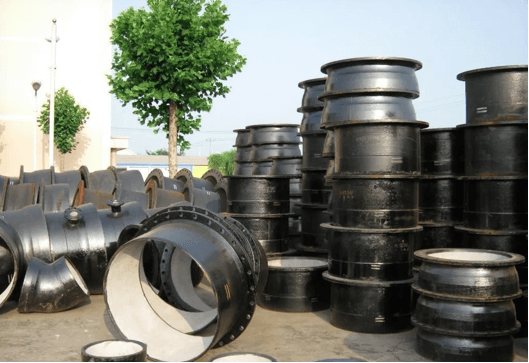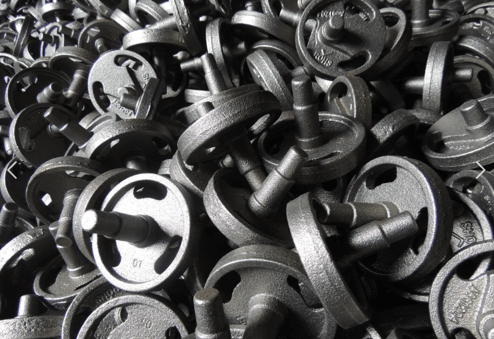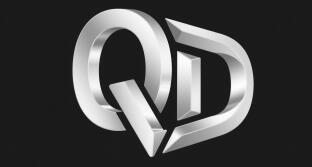Compared to brittle gray iron, ductile iron uses a spherical graphite structure. It combines the excellent casting properties of cast iron with strength and toughness close to steel. This makes it widely used across various industries. QD is a casting factory and exporter of ductile iron.

What is Ductile Iron?
Ductile iron is also called nodular iron or ductile cast iron. This spherical graphite structure reduces stress concentration inside the material.
Its features include:
- The graphite is distributed in spherical form. This effectively prevents crack propagation.
- It combines high strength, high toughness, and good castability.
- Its properties can be further improved through heat treatment.
Advantages of Ductile Iron

High Strength and High Toughness
Ductile iron has a tensile strength between 400-900 MPa. Its elongation can reach 10%-25%. This is much higher than gray iron. It can even compare to some carbon steels.
Excellent Castability
Ductile iron has good fluidity and low shrinkage. It can produce castings with complex shapes and varying wall thicknesses. Its casting process is relatively simple. It has a high yield rate. It is especially suitable for mass production.
Excellent Wear and Fatigue Resistance
Its spherical graphite structure provides good wear resistance and fatigue resistance. It is suitable for long-term, high-load operating conditions. It is used in transmission parts like gears and crankshafts.
Good Vibration Damping Performance
Compared to steel, ductile iron has better vibration damping capacity. It effectively absorbs vibration and noise. It is often used in machine tool bodies, engine brackets, and other equipment requiring stable operation.
High Cost-Effectiveness
Ductile iron has lower material and processing costs than carbon steel. Meanwhile, its long service life and low maintenance needs further improve overall economy.
Ductile Iron Is Everywhere
Here are typical applications of ductile iron in various fields:
| Application Field | Typical Components | Performance Requirements |
| Municipal Engineering | Manhole covers, drainage pipes, valves | Corrosion resistance, high load capacity, long service life |
| Automotive Industry | Crankshafts, gears, steering knuckles, hubs | High strength, fatigue resistance, lightweight |
| Machinery Manufacturing | Machine tool bodies, pump casings, hydraulic components | High rigidity, vibration damping, stability |
| Energy Equipment | Wind turbine hubs, nuclear power components | High toughness, low temperature resistance, impact resistance |
| Construction and Infrastructure | Bridge supports, pipe fittings | Durability, aging resistance |

Comparison with Gray Iron and Carbon Steel
To clearly show the overall performance of ductile iron, we compare it with gray iron and carbon steel:
| Performance Indicator | Ductile Iron | Gray Iron | Carbon Steel |
| Tensile Strength (MPa) | 400-900 | 150-400 | 500-1000+ |
| Elongation (%) | 10-25 | <1 | 15-30 |
| Castability | Excellent. Suitable for complex parts. | Excellent, but high brittleness. | Poor. Requires post-processing. |
| Cost | Medium. High cost-effectiveness. | Low | High |
| Application Range | Wide. Strong versatility. | Limited to low-stress applications. | High-stress, high-precision applications. |
Comparative Analysis:
The balance of ductile iron lies in this: it overcomes the brittleness of gray iron, and it makes up for carbon steel’s shortcomings in casting complexity and cost.
Compared to gray iron: Ductile iron holds an overwhelming advantage in strength and toughness. It is particularly suitable for components that endure impact and vibration.
Compared to carbon steel: Ductile iron holds clear advantages in cost, castability, and vibration damping. Although its ultimate strength is slightly lower, it is fully adequate for most engineering applications.
Contact Us
Need to find the best balance between strength, toughness, and cost? Ductile iron is the ideal choice for modern engineering. With advanced production equipment and extensive industry experience, QD provides custom ductile iron casting services that are high-performance and highly reliable. Whether for standard parts or complex structural components, we can meet your requirements. Please feel free to contact our team.
FAQ
1. What is the main difference between ductile iron and gray iron?
The graphite in ductile iron is spherical. It has high strength and toughness. The graphite in gray iron is flaky. It is brittle and has lower strength.
2. Where is ductile iron suitable for use?
Ductile iron resists corrosion and withstands impact. It is suitable for various environments like municipal, automotive, and mechanical applications. It performs especially well in damp and high-load conditions.
3. What is the cost of ductile iron?
Its cost falls between gray iron and carbon steel. However, it offers high overall cost-effectiveness due to its long service life and low maintenance needs.
4. What size of ductile iron castings can QD produce?
We can produce castings weighing from a few kilograms to tens of tons. The maximum size depends on your specific requirements. Please provide drawings for consultation.
5. How long is the service life of ductile iron?
Under normal service conditions, ductile iron castings can last for decades. Their durability benefits from excellent material properties and surface treatment technology.
6. How to select the grade of ductile iron?
Grade selection depends on the mechanical requirements of the application. We can recommend suitable grades based on your needs, such as QT400-18, QT600-3, and provide material test reports.
